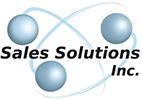Introduction
In today’s world, the importance of personal protective equipment (PPE) cannot be overstated. PPE is a vital tool in ensuring the safety and well-being of individuals across various industries, ranging from healthcare and construction to manufacturing and even everyday activities. This blog article explores the significance of PPE, its different types, and the key role it plays in safeguarding individuals from potential hazards.
- Understanding Personal Protective Equipment (PPE)
Personal Protective Equipment, commonly known as PPE, refers to specialized gear designed to protect individuals from potential health and safety risks in the workplace or other environments. The purpose of PPE is to create a physical barrier between the wearer and potential hazards, thereby reducing the risk of injury or illness.
- Types of Personal Protective Equipment
PPE encompasses a wide range of equipment, each specifically designed to mitigate different types of hazards. Here are some common types of PPE:
a. Head Protection: Helmets, hard hats, and bump caps protect the head from falling objects, electrical hazards, and impacts.
b. Eye and Face Protection: Safety glasses, goggles, face shields, and welding helmets shield the eyes and face from chemical splashes, flying debris, radiation, and intense light.
c. Respiratory Protection: Masks, respirators, and air-purifying systems help filter out harmful particles, gases, and vapors, safeguarding the respiratory system.
d. Hand and Arm Protection: Gloves, gauntlets, and arm coverings protect against cuts, punctures, abrasions, chemical exposure, and thermal hazards.
e. Foot and Leg Protection: Safety shoes, steel-toed boots, and leggings shield the feet and legs from falling objects, crushing, punctures, and electrical hazards.
f. Body Protection: Coveralls, aprons, vests, and jackets provide protection against chemicals, extreme temperatures, and physical hazards.
- Importance of Personal Protective Equipment
a. Preventing Injuries and Illnesses: PPE acts as a crucial line of defense, preventing injuries and illnesses caused by various hazards. By wearing the appropriate gear, individuals significantly reduce the risk of harm and potential long-term health issues.
b. Ensuring Compliance with Regulations: PPE is often mandated by occupational health and safety regulations. By providing and using the required protective equipment, individuals and organizations ensure compliance with legal requirements and maintain a safe working environment.
c. Enhancing Productivity: When individuals feel safe and protected, their focus and productivity increase. By utilizing PPE, organizations promote a culture of safety, resulting in improved efficiency and reduced downtime due to accidents or injuries.
d. Minimizing Liability: Employers have a legal and moral obligation to protect their employees from harm. By providing adequate PPE, employers minimize the risk of legal liability and protect their workforce from unnecessary risks.
- Selecting and Using PPE Effectively
To ensure the effectiveness of PPE, it is essential to follow these guidelines:
a. Assess the Hazards: Identify the specific hazards present in the environment to determine the appropriate type of PPE required.
b. Choose the Right PPE: Select PPE that provides adequate protection for the identified hazards. Consider factors such as the type and severity of the hazard, comfort, fit, and durability.
c. Proper Fit and Maintenance: PPE should fit well and be regularly inspected, maintained, and replaced when damaged or worn out. Poorly fitting or damaged equipment may not provide the intended protection.
d. Training and Education: Educate individuals on the proper use, limitations, and care of PPE. Training should cover how to wear, adjust, and remove PPE correctly to maximize safety.
Conclusion
Personal protective equipment plays a vital role in safeguarding individuals from potential hazards in various industries and environments. By utilizing the appropriate PPE, employers and individuals prioritize safety, prevent injuries and illnesses, and ensure compliance with regulations. Selecting, using, and maintaining PPE effectively enhances productivity and minimizes liability. Remember, when it comes to personal safety, investing in high-quality PPE is a small price to pay for long-term well-being and peace of mind.

0 Comments